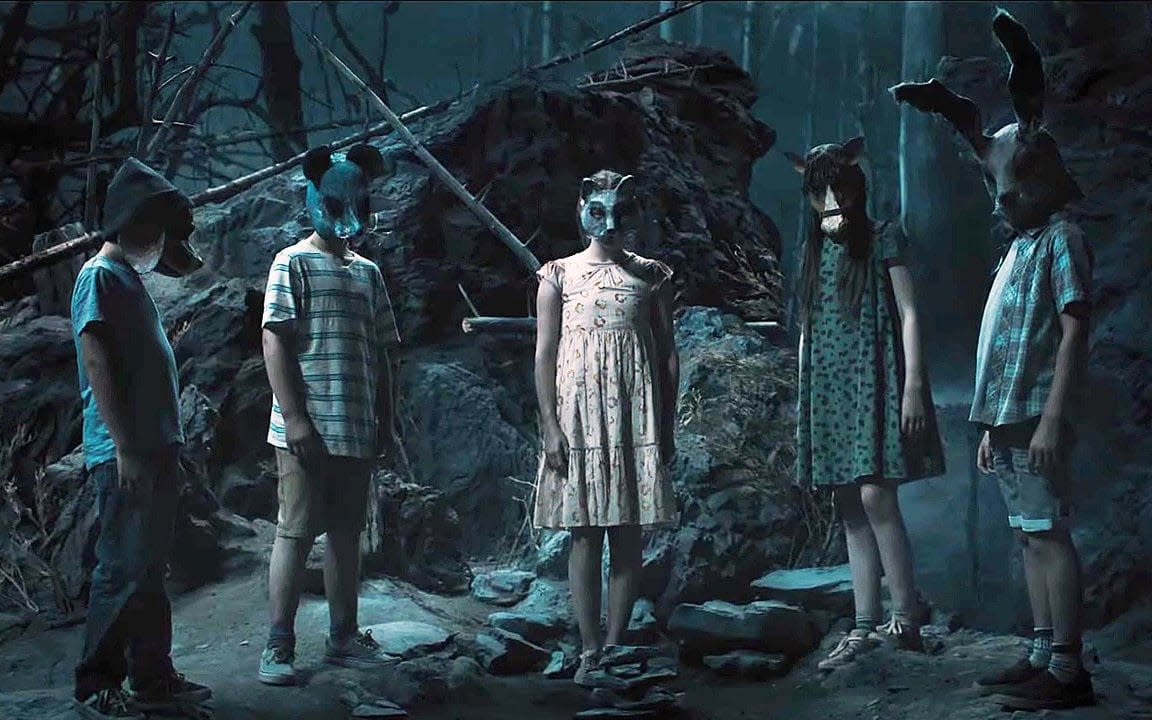Pet Sematary review: a poor Stephen King remake, full of tasteless jokes and disgruntled cats

Dirs: Kevin Kölsch, Dennis Widmyer. Cast: Jason Clarke, Amy Seimetz, John Lithgow, Jeté Laurence, Maria Herrera, Alyssa Brooke Levine. 15 cert, 101 min
Stephen King thought he’d gone too far when he wrote Pet Sematary. It was completed years before he published it in 1983 to fulfil his contract with Doubleday; he’d originally locked it in a drawer, baulking at a plot which involves the resurrection of a couple’s dead child. From the moment that the kid slinks back from a hidden burial ground and attacks them, the story tumbles straight to Bleakville. King admits that the book genuinely scared him; he’s also on record saying that he doesn’t believe in the irredeemable hopelessness at its core.
The new film adaptation lives up to that hopelessness – it’s very much the work of grave-robbers scrabbling around fruitlessly in the dark. On almost every level, it makes the 1989 version by Mary Lambert, which has built up a strong cult following over the years, look better than it ever truly was.
That film had B-movie production values and a C-list cast – Dale Midkiff? – but something about it sticks in the mind. Punctuating its trashiness were a few touches of hallucinatory verve. The midway death of the infant, Gage, was a genuinely horrific rupture, even if nothing that followed could hit home as more than a lurid fantasy – an overriding problem with the plot, as King perhaps knew.
The new film goes south on a similar gradient, but starts from a baseline that’s already poor. It rings some changes I won’t spoil, and you may be wondering why young Gage has such a paltry role in the first half – partly for reasons to follow, but mainly because this is such a slack business it can’t even give us a rounded family portrait of four.
Father and daughter (Jason Clarke and Jeté Laurence) get the lion’s share of attention, thanks to an icky daddy’s-girl treatment that imports some bonus incest overtones. The film gets thin, semi-appalled laughs out of travestying this relationship when the shovels come out – the kind of laughs that a sick joke receives when it isn’t strictly funny, but you at least recognise it to be a joke.
Bizarre quantities of action simply don’t connect to anything at all. When the Creed family move into a new home with a bristling wilderness out back and a dangerous road skirting their front lawn, the first sign of anything amiss is a masked pagan procession with youngsters carrying some furry body for burial in the woods. (The screenplay just about knows that “Sematary” is a misspelling, but seems to think “cemetary” is correct when Clarke jumps on Google.) Why these masks, and who’s wearing them, we never find out – they’re just generic horror props for later, left lying around because the Purge and Strangers franchises brought them back in vogue.
The mother, played this time by Amy Seimetz, is hung up on death, having witnessed in childhood the horrific decline of her sister, Zelda (Alyssa Brooke Levine). The latter suffered from spina bifida that, even before she took a fatal plunge down a dumb waiter, is presented as the grisliest spectacle of the lot. Depressingly misjudged, this flashback-y subplot disconnects the helpless Seimetz from the rest of the movie, leaving her to wander around imagining dumb waiters and tastelessly warped vertebrae everywhere she looks.
The usually solid Clarke does what he can in the circumstances, and has a modestly enjoyable John Lithgow helping him out as the Creeds’ empathetic neighbour – though not even the ham-prone Lithgow can top Fred Gwynne’s iconic reading of the line “sometimes dead is better”, a Kingian equivalent of Edith Evans immortalising Lady Bracknell’s handbag.
All but one of the actors wind up trapped, in a film with such weak connective ideas and merciless underlighting that it adds up to a miserable viewing experience. The exception is the cat, a run-over moggy called Church, much loved by the little girl, which Clarke and Lithgow conspire to bury one night in sacred soil. It comes back matted, stinking and furious, as well it might be. This four-legged scene-stealer could have been the best thing in a good version of Pet Sematary, so in this one, there’s hell to pay.
What are you expecting from the remake of Pet Sematary? Will you be going to watch it? Tell us what you think in the comments section below.

